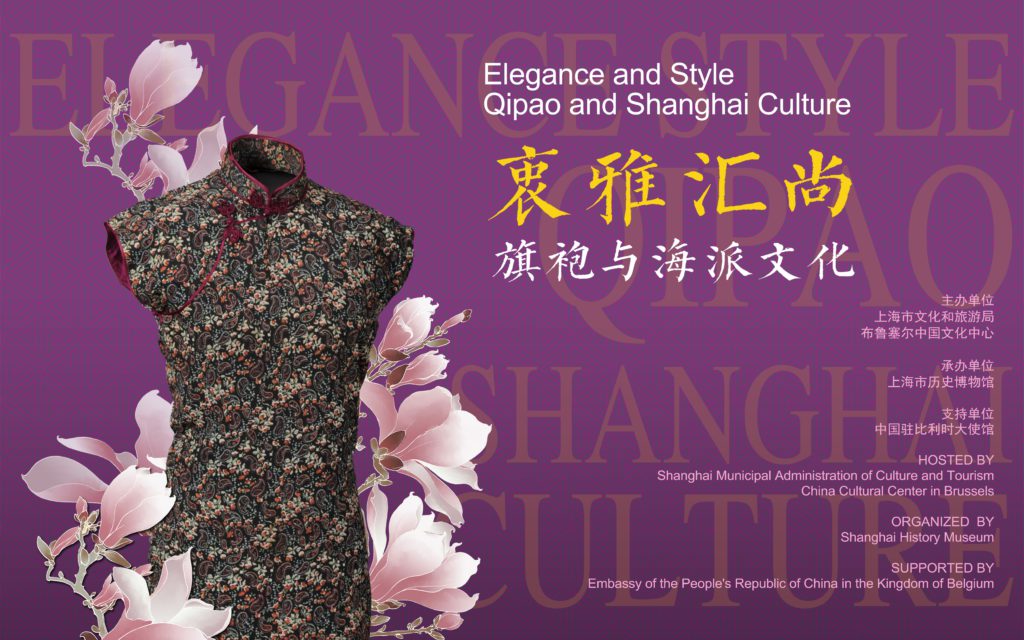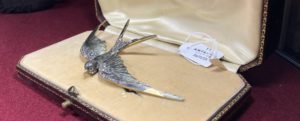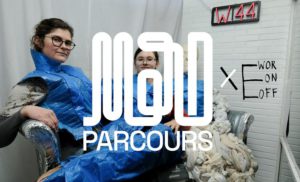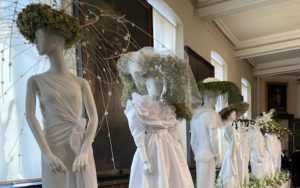Brussels qipao exhibition shows striking depth of Chinese fashion
The exhibition ‘Elegance and Style – Qipao and Shanghai Culture’, organized by the Shanghai History Museum and hosted by the Shanghai Municipal Administration of Culture and Tourism, is open to visitors in the China Cultural Center in Brussels until September 5, 2024. An opportunity to delve into the distinctive history of one of fashion’s most notable and widespread traditional clothing!
One of China’s unmissable cultural elements, the qipao 旗袍 is a Chinese traditional garment that was popularized by the city of Shanghai, China. Typically characterized by a distinct high collar with an asymmetric opening at the neckline, two side slits and made from sumptuous fabrics, usually wool or embroidered silk, the one-piece item was designed in the 1920s, and originally mostly worn by Chinese socialites in Shanghai.
Qipao: more than a fashion statement
Evolving from the Manchu-style robe that emerged under the Qing dynasty (1644 to 1912) from a desire to establish a new social order and strict dress code rules, and taking its roots from Han traditional clothing, what we call today the “modern” qipao was actually developed in the 1920s and represents a fusion of the traditional Chinese etiquette and Western fashion influences. The dress would come in many styles throughout the years, to better fit the political and economic climate of different eras, and arose as a fashion trend after the New Culture Movement. Born in the cosmopolitan city of Shanghai, international and trendy southern mega city, the Shanghai-style qipao is an emblem of modern China and its phenomenal progress, and embodies the essence of femininity and elegance.
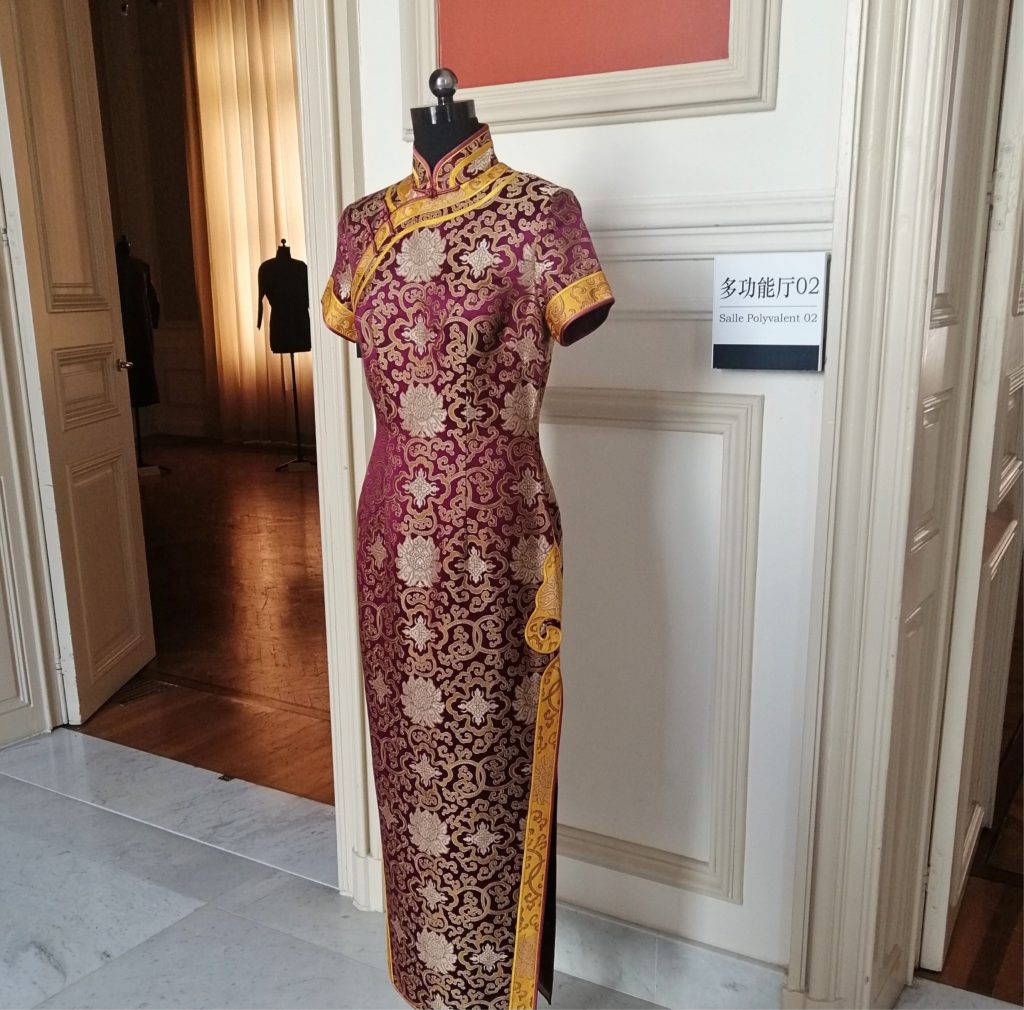
The exhibition ‘Elegance and Style – Qipao and Shanghai Culture © photo Sandra Bouguerra
From the 1920s to the 1960s, the qipao experienced a peak in popularity and in recent years, the now ubiquitous garment truly began its global expansion, spreading from China’s epicenter, Shanghai. Also largely owing to Hollywood, it was established as a true Chinese must-wear, garnering attention from the fashion scene overseas. At present, the qipao remains the centerpiece of many modern fashion outfit combinations.
Women’s emancipation: the qipao’s feminist origins
In the early 20th century, women began to gain a newfound freedom. Traditional gender roles were being brought into question and the qipao was worn by women as a way of upheaving against patriarchy, yearning for gender equality. The mythical dress gradually became more formfitting, embracing the silhouette of its wearer, and women were no longer required to hide themselves: they were showing more skin and breaking free from the societal norms. As time went by, the qipao, with its versatile esthetics, was incorporated into famous movies and TV series and worn during lifetime events such as prom nights, weddings and birthdays. More recently, as women of Chinese descent are combating detrimental notions such as cultural appropriation and fetishization, the qipao is regarded as a symbol of women’s liberation and expression of sexuality.
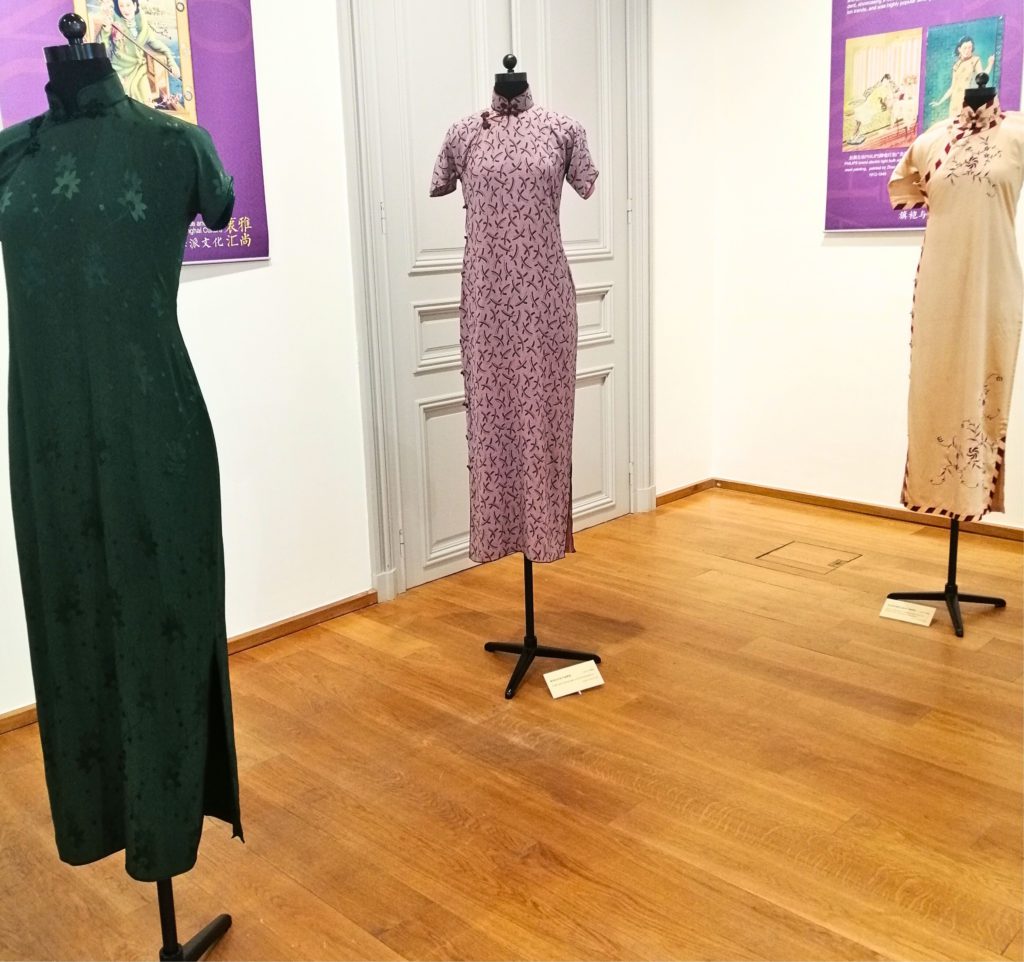
he exhibition ‘Elegance and Style – Qipao and Shanghai Culture © photo Sandra Bouguerra
Bearing witness to Shanghai’s heritage
The China Cultural Center in Brussels offers no fewer than 30 colorful qipao dresses of different time periods, social classes and styles. The visitors can also learn more about the history of Shanghai and its rapid development, in both English and Chinese, through various historical photographs and artifacts.
Shanghai, vibrant hub showcasing modern Chinese culture and innovation, has long been home to international art, fashion and trends, and its heritage is the result of a perfect blend of Chinese traditional customs, industrial civilization and Western influences. The ‘Elegance and Style – Qipao and Shanghai Culture’ exhibition is a perfect occasion to reinforce cultural and historical ties between China and Belgium, and for visitors to understand how Shanghai contributed to shaping modern Chinese civilization, but also for visitors to appreciate the beauty of Chinese fashion and its significant impact.
